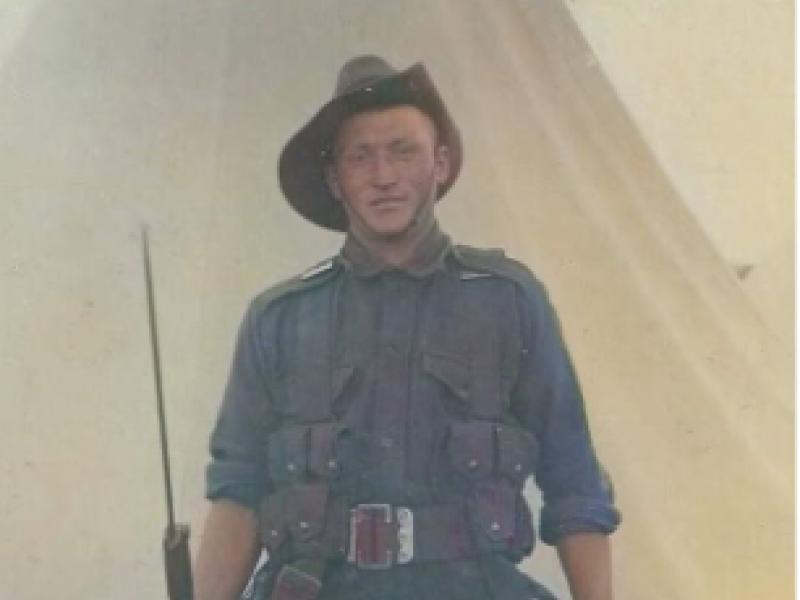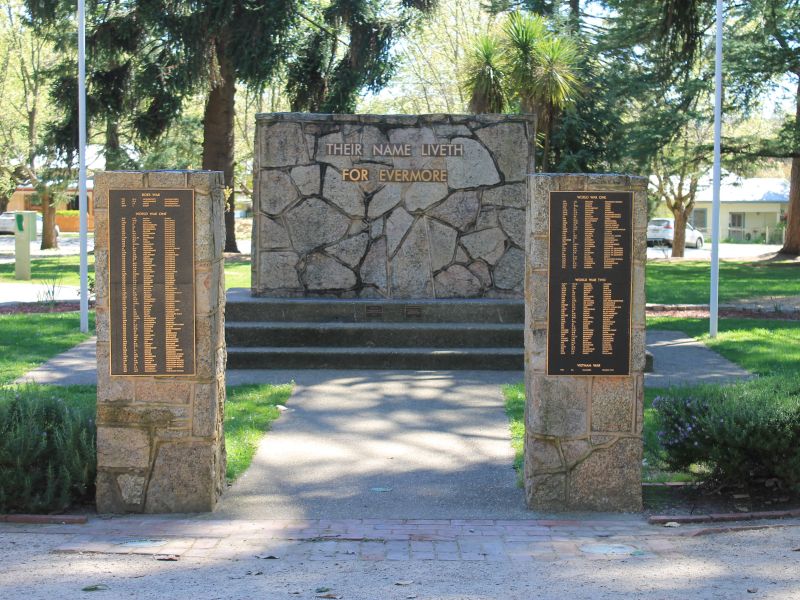Ernest (Ernie) Edmondson
Ernie was in July of 1893. Two resources tell of different birth places, Beechworth and Wooragee. He was the seventh of ten children for Robert Boyd and Mary Elizabeth Hannah (née Twist).
Ernie enlisted on the 27th of August, 1914, at Sydney. His low Regimental Number of 655 indicates how early in the conflict he had “answered the call”. He passed his medical with flying colours and was placed in C Company of the 4th Battalion, 1st Infantry Brigade of the 1st Australian Division.
There are conflicting statements as to Ernie’s marital status. His attestation papers show that, as of the 22nd of August 1914, he was single, whereas family records in Ancestry.com show that he was married to Vera Kennedy, the “first true love of Ernest”. All correspondence regarding Ernie’s death, including the returning home of his personal belongings, was addressed to his father.
Ernie’s Casualty Form - Active Service B-103, the form that lists all of the major events in Ernie’s service has only two statements written on it. The first tells of him being reported as being killed in action and the second that he was buried in Wire Gully. This lack of events is most unusual when compared the B-103 forms of other soldiers. Written in the margins of other papers include the time of his embarkation at Sydney on HMAT A14 Euripides on the 20th of October 1914, and a second statement that he embarked to join the MEF Gallipoli Campaign at Alexandria on the 5th of April, 1915.
The 4th Battalion landed at Gallipoli on the 25th of April. Their initial task was to land and support the 8th Battalion on the right of the line. The following day there was a general advance and subsequent withdrawal to the original line. During this action the battalion’s commanding officer, Liuetenant Colonel Astley Thompson was killed and Major Charles MacNaghten wounded. Command was passed onto Major D. Storey. On the 30th of April the battalion withdrew to beach and was reorganised. Liuetenant Colonel A.J. Bennett DSP took command. That night the battalion moved forward and took over the trenches at the head of Shrapnel Gully. The very next the Turks attempted to undertake a major advance which failed with enormous casualties on the Turk’s side. One of the Australian casualties of that day was Private Ernest Edmondson. Ernie was buried in Wire Gully (see image below). The location of his grave was lost over the years.
He is remembered on the Australian War Memorial Roll of Honour, the Lone Pine Memorial to the Missing, and the Beechworth War Memorial. For his service, he was awarded the 1914-1915 Star, the British War Medal and the Victory Medal.
The 24th of June, 1915, edition of the Upper Murray and Mitta Herald contained the following article.
“Australians in the Dardanelles
A feeling of profound regret was experienced by residents of Mitta Mitta and district when it became known that private Ernest Edmondson had been linked in action. The telegram containing the sad news was delivere to Mr. and Mrs. Edmindson late on Saturday night by the Rev. Mr. Dunstan. Ernie was well-known in this part as a bright, happy-natured young fellow of the highest character. At the school assembly on Monday, feeing reference was made by the head teacher to the passing of one who was formerly a pupil. The children were exhorted to cherish the memory of the brave young man who had answered his country’s call, and had willingly sacrificed his life that they might retain the freedom handed down to them by the builders of the nation. The school flag remained throughout the day at half-mast. The upmost sympathy is felt for Mr. and Mrs’ Edmondson and family in their sad bereavement.”
The following day, The Argus newspaper published excerpts of a letter from Private Norman Grant to his mother. It provides us with an insight into Ernie’s last moments.
"We had rather a novel experience one day in that we had to lie on the ground under machine-gun fire, without being able to reply to it. I think that is about the worst thing an infantryman has to put up with, and is the sort of thing that tests a man's nerve. The bullets sang over us, and chipped the dirt around us. It was just like thousands of wasps darting around us. We had been told in our training to 'get well down.' On this occasion nobody needed telling. We just got down and flattened out like pancakes; at least I did, for I didn't look around to see what the others did being under fire for the first time wasn't so bad as I expected, but, believe me, the man who says he didn't notice it at all handles the truth rather roughly. Poor Ern Edmondson was shot near me the other day. He received two shrapnel bullets, one in the shoulder and one in the arm. He lived 10 minutes, and spoke to us. His people will be terribly cut up, but perhaps it will be some consolation to them to learn that his comrades who saw him die know that he died a gallant death and was a jolly good fellow.”

 Stephen Learmonth
Stephen Learmonth